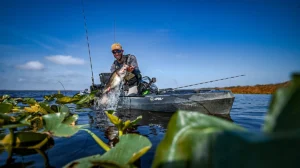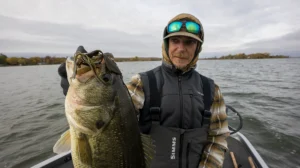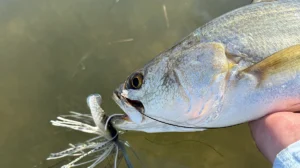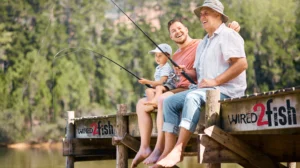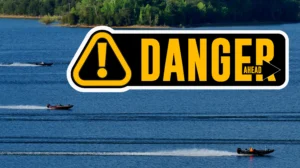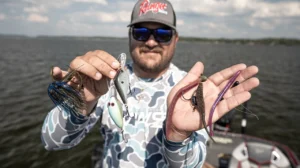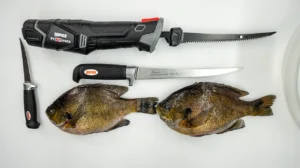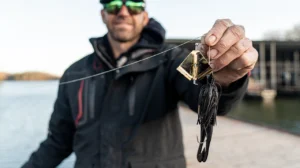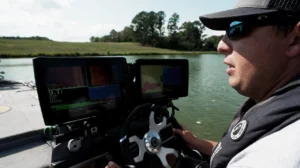Fall can challenge even the most experienced anglers. Cooling water, scattered bait, and unpredictable patterns make locating bass tough. Dustin Connell shares how to simplify your approach and catch fish when the bite is slow. Rather than chasing schools or overanalyzing electronics, Connell leans on patience, confidence, and obvious structure that bass consistently use during seasonal transitions.
Featured Product
- MINNOW – Rapala CrushCity Mooch Minnow: Buy at Bass Pro Shops | Buy at Tackle Warehouse | Buy at FishUSA
- JIGHEAD – VMC RedLine Series Tungsten Swimbait Jighead (3/16 oz.): Buy at Bass Pro Shops | Buy at Tackle Warehouse | Buy at FishUSA
- ROD – 13 Fishing Muse II Black Spinning Rod 7’1″ Medium: Buy at Tackle Warehouse
- REEL – Shimano Vanford Spinning Reel, 3000 size: Buy at Bass Pro Shops | Buy at Tackle Warehouse
- LINE – Seaguar Gold Label Fluorocarbon, 12-pound: Buy at Bass Pro Shops | Buy at Tackle Warehouse
Finding Obvious High-Percentage Spots
When conditions get tough, Connell targets what he calls “obvious” areas — places like bridges, main points, and community holes. These spots act as natural stopping points where bass move up or down with shifting temperatures. Instead of searching for secret locations, Connell focuses on the math: each bridge piling, rock edge, or current break presents a new opportunity for a bite.
Matching Fall Forage
As the season changes, bass transition from feeding on bluegill to shad. Connell adjusts his lure selection to mirror this natural shift. His setup centers on shad-colored baits like the Mooch Minnow, spinnerbaits, and jerkbaits. Each imitates the profile and movement of baitfish, making them ideal for clear fall water. Connell varies bait size to match fish behavior — starting small to trigger bites and then upsizing to tempt bigger fish. This progression keeps him in tune with what bass want throughout the day.
Staying Confident in Tough Conditions
Connell’s approach is built on confidence, not complexity. Fall fishing requires grinding through slow periods and trusting simple patterns. By sticking to obvious structure, matching the shad bite, and rotating between a few reliable lures, anglers can still find consistent success when conditions seem the hardest.
Boat Setup
- TROLLING MOTOR – Minn Kota Ultrex QUEST: Buy at Bass Pro Shops
- FISH FINDER – Lowrance HDS PRO 12 Fish Finder/Chartplotter: Buy at Bass Pro Shops
- FORWARD-FACING SONAR – Lowrance ActiveTarget 2 Live Sonar: Buy at Bass Pro Shops
- BOAT – Triton 21 TRX: Check out at Triton Boats
- MOTOR – Mercury Pro XS 250 hp: Check out at Mercury


![[VIDEO] Top 5 Baits for Schooling Bass Success](https://www.wired2fish.com/wp-content/uploads/2025/12/cooper-dbs-website-300x169.webp)
![[VIDEO] Filleting Bluegill Made Easy: Tips and Tricks](https://www.wired2fish.com/wp-content/uploads/2025/05/bluegill-cleaning-300x169.webp)
![[VIDEO] Cold Front Hack for Catching Shallow Bass](https://www.wired2fish.com/wp-content/uploads/2025/12/scanlon-website-300x169.webp)
![[VIDEO] Maximize Your Graphs – Pro Tips & Tricks](https://www.wired2fish.com/wp-content/uploads/2025/12/huff-website2-300x169.webp)
